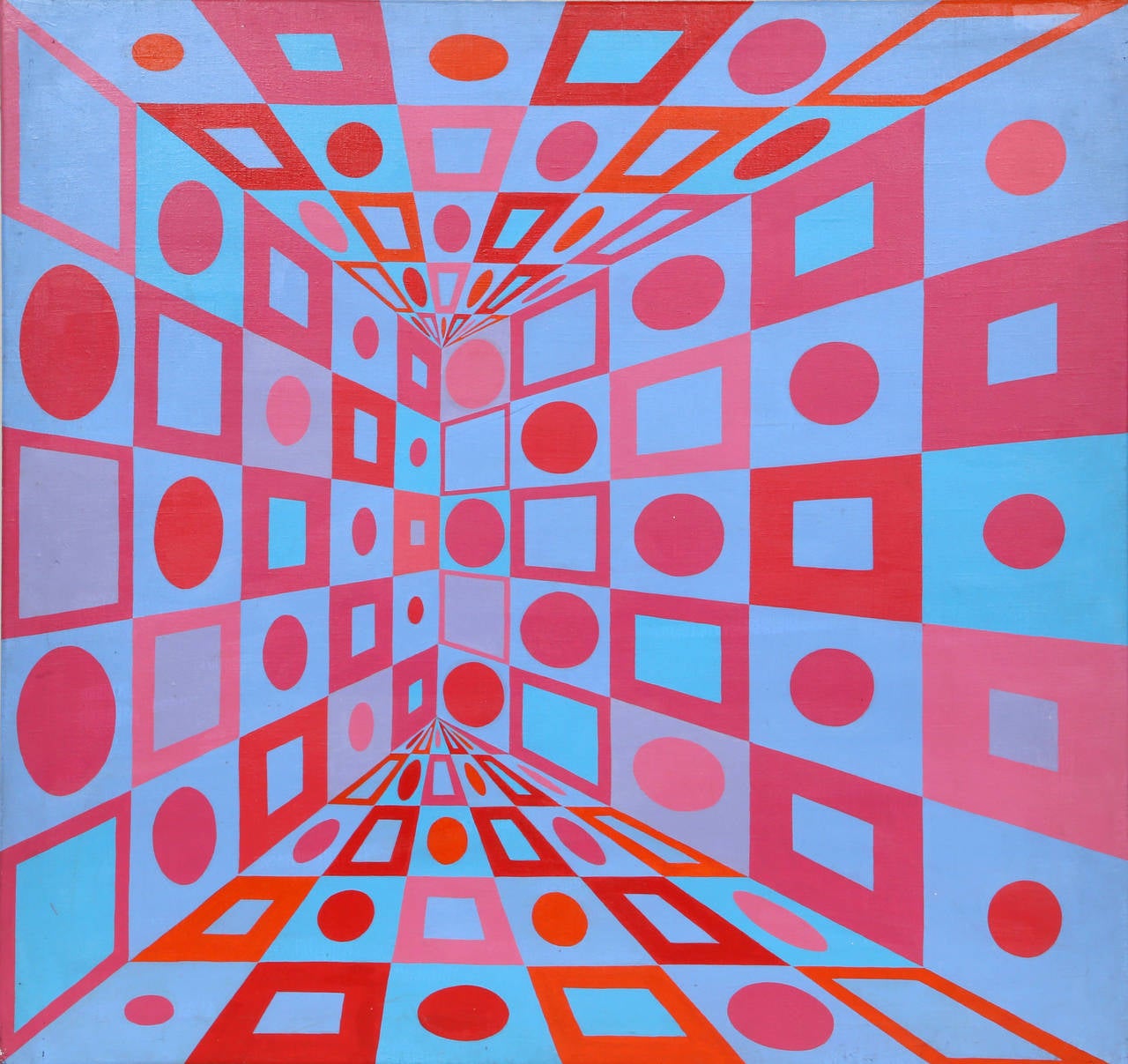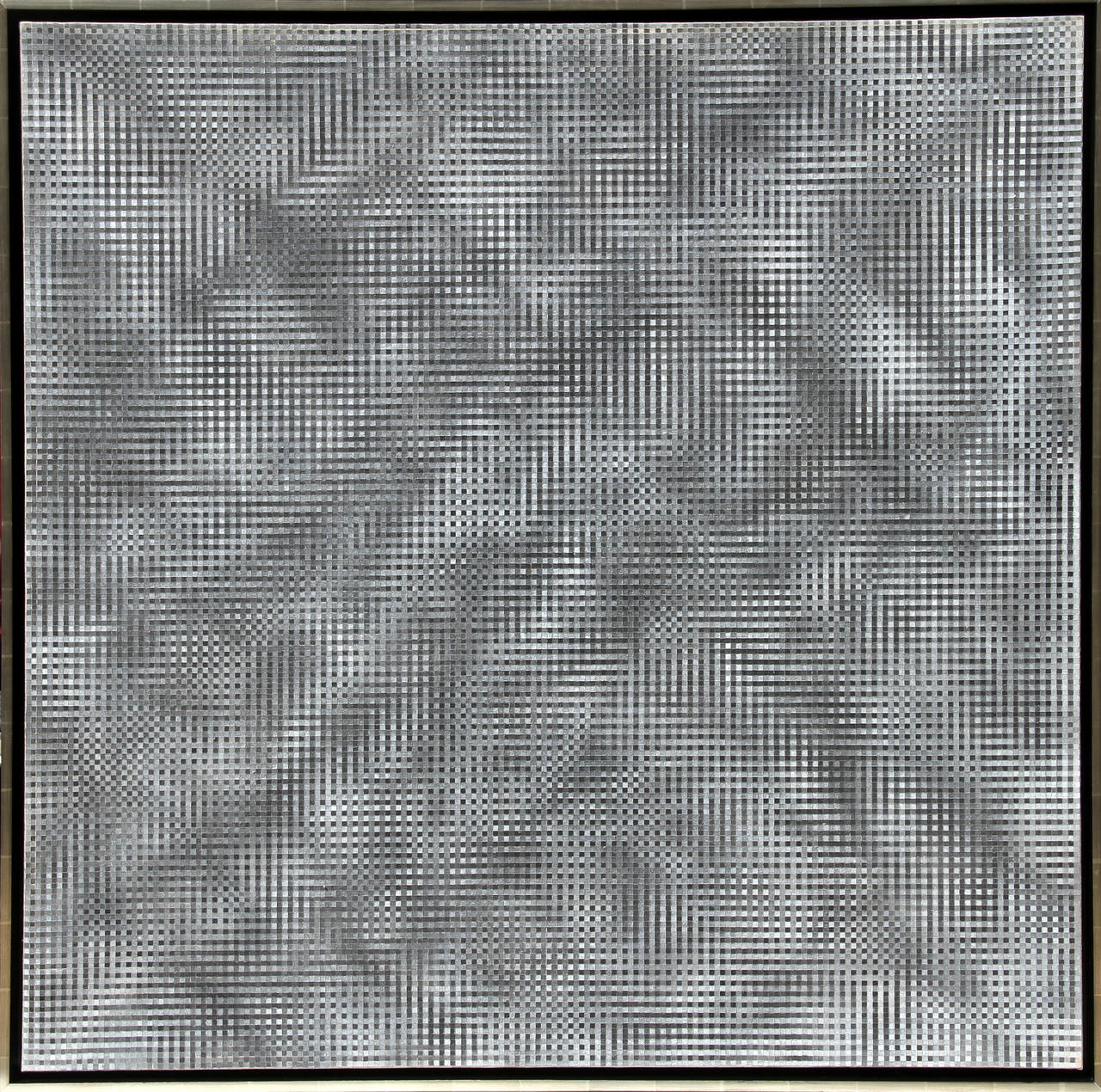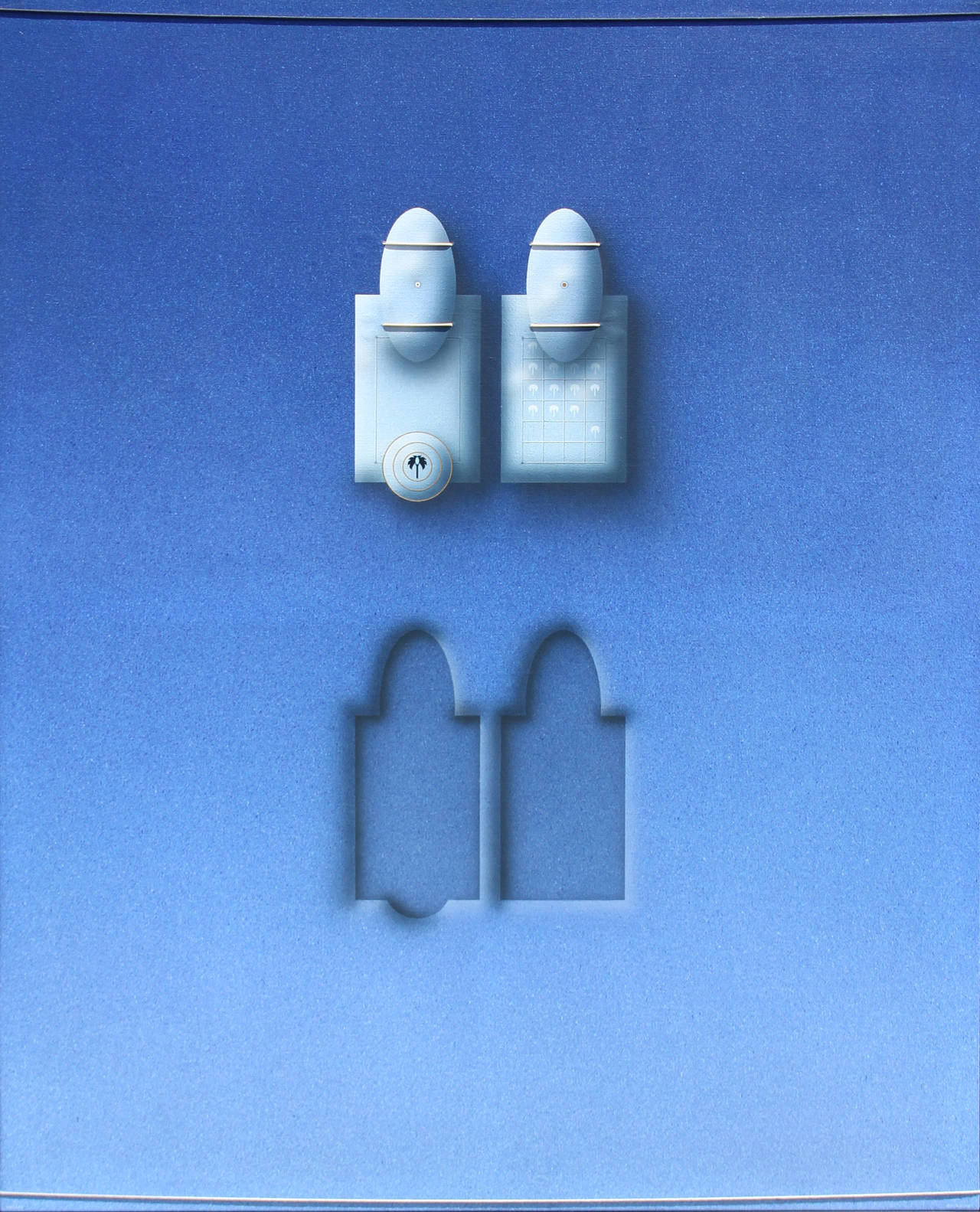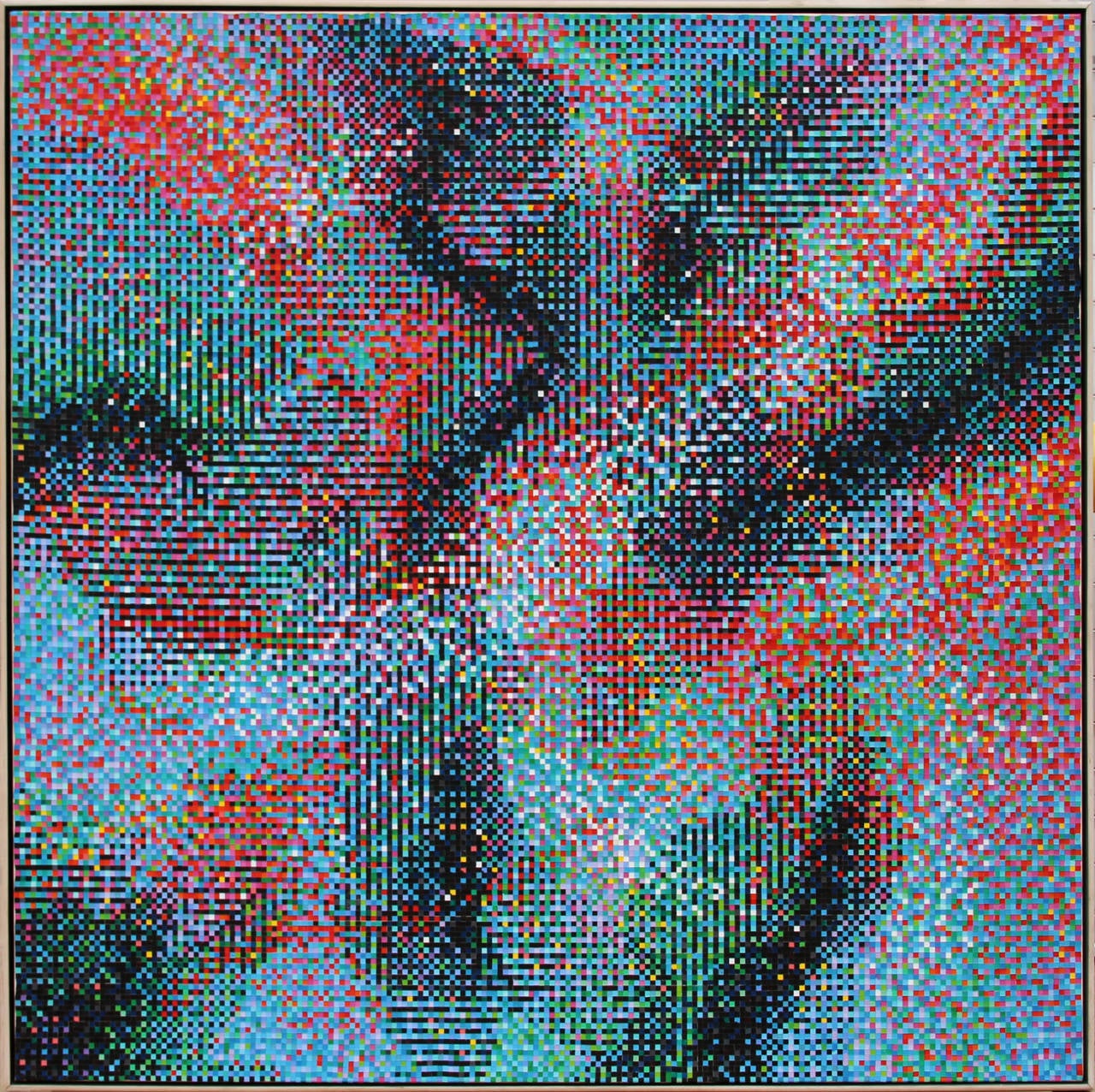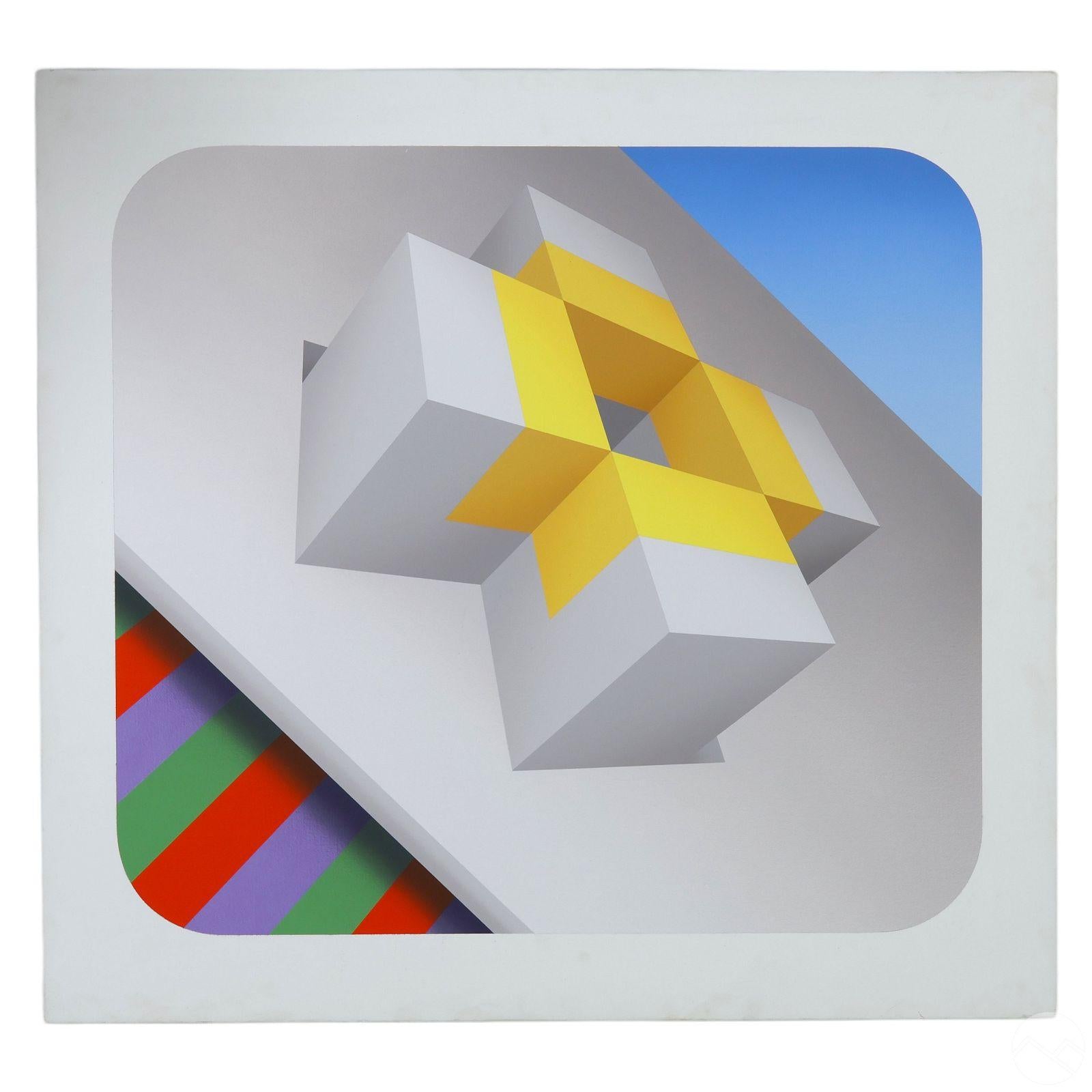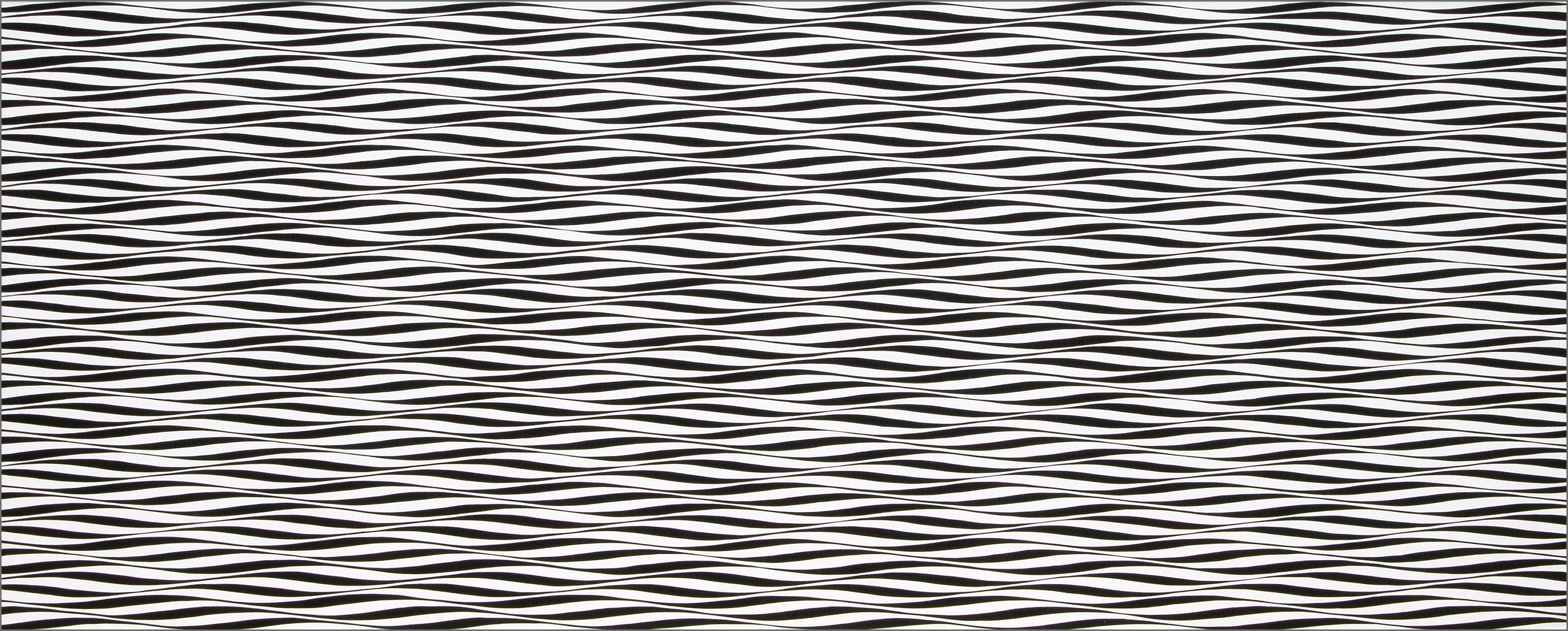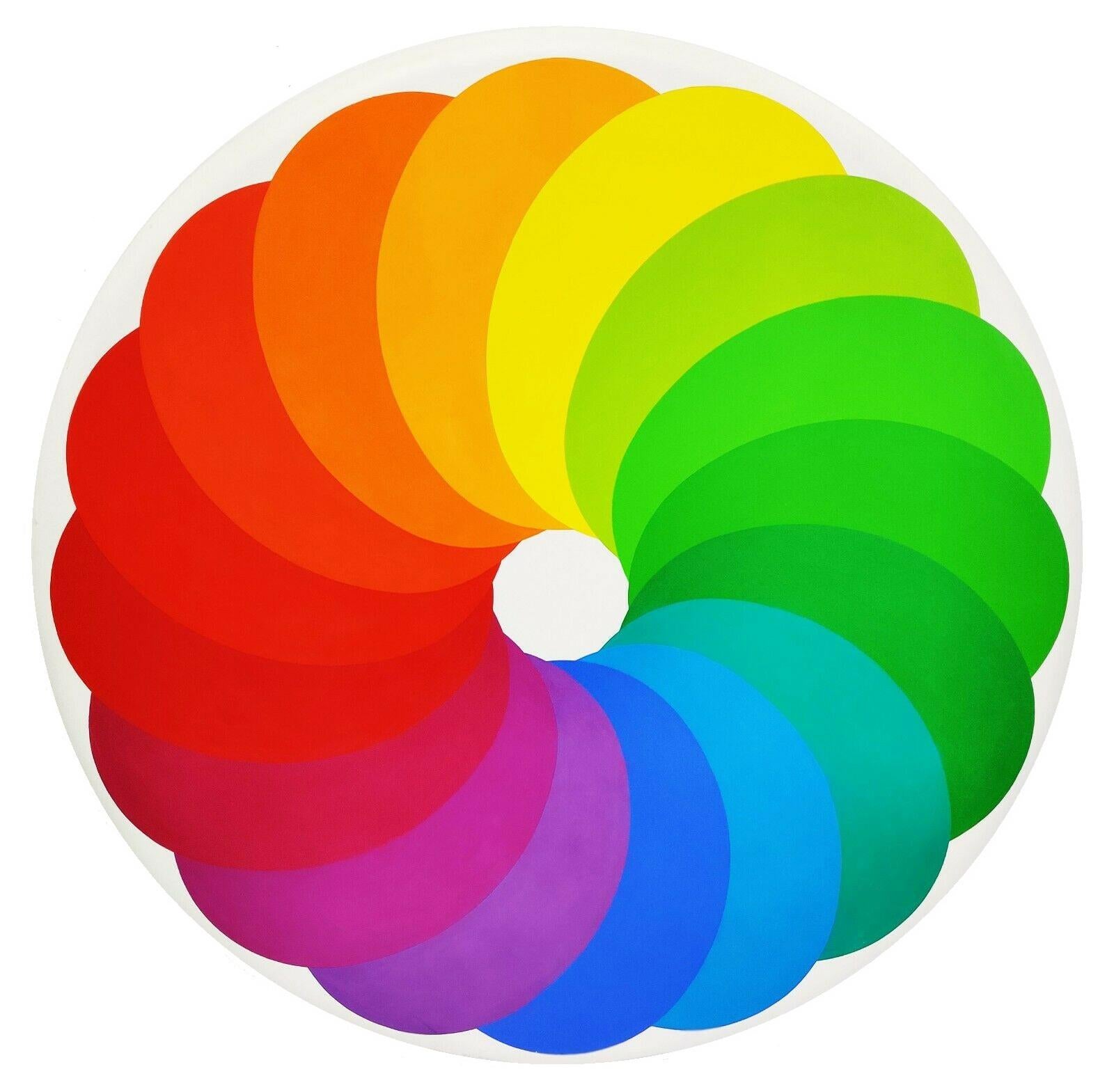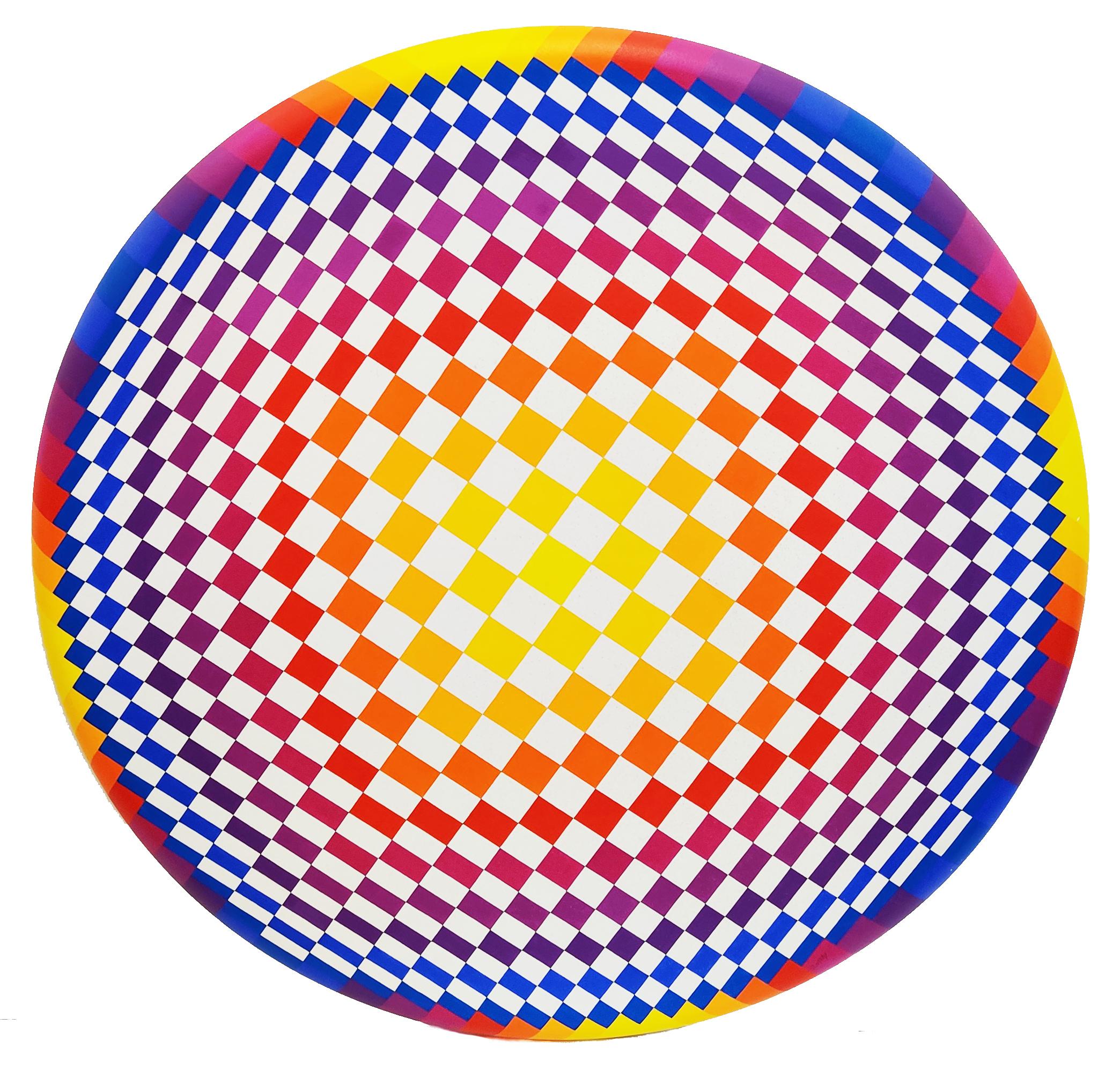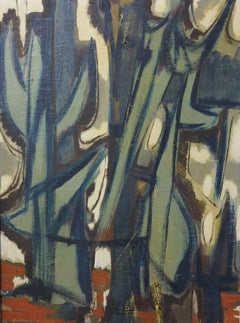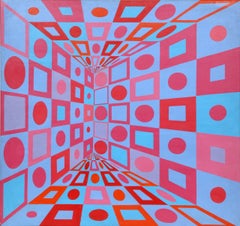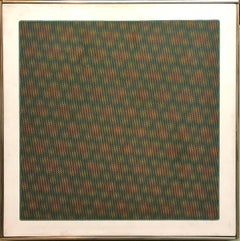
V (Op Art Painting)
View Similar Items
Want more images or videos?
Request additional images or videos from the seller
1 of 7
Seymour ShapiroV (Op Art Painting)1968
1968
About the Item
- Creator:Seymour Shapiro (1927, American)
- Creation Year:1968
- Dimensions:Height: 60 in (152.4 cm)Width: 48 in (121.92 cm)Depth: 1.5 in (3.81 cm)
- Medium:
- Movement & Style:
- Period:
- Condition:
- Gallery Location:Wilton Manors, FL
- Reference Number:1stDibs: LU24522133953
About the Seller
4.9
Gold Seller
These expertly vetted sellers are highly rated and consistently exceed customer expectations.
Established in 2007
1stDibs seller since 2015
328 sales on 1stDibs
Typical response time: 9 hours
More From This SellerView All
- Plant-likeBy James BrooksLocated in Wilton Manors, FLJames Brooks (1906-1992). Plantlike, c.1945. Oil on canvas measures 18 x 24 inches; 24 x 30 inches in a painted wood frame of the period. Signed "J. David Brooks" lower right, Signed...Category
1940s Abstract Expressionist Abstract Paintings
MaterialsCotton Canvas, Oil
$12,000 Sale Price20% Off - Bubblegum GirlLocated in Wilton Manors, FLFantastic painting of a young girl blowing bubblegum. Oil on canvas, 24 x 32 inches; slightly larger in chrome frame. Signed illegibly lower right.Category
1970s Abstract Abstract Paintings
MaterialsCotton Canvas, Oil
- The Edge V (Op Art plexiglass box wall sculpture)By Mon LevinsonLocated in Wilton Manors, FLMon Levinson (1926-2014). The Edge V, 1965. Plexiglass, acetate and paper. 24 x 24 x 3 inches. Minor scuffing on surface of plexiglass. Original gallery label affixed en verso. Biog...Category
1960s Op Art Abstract Paintings
MaterialsPlexiglass, Paper
$6,000 Sale Price50% Off - Russian Cubist Portrait of a WomanLocated in Wilton Manors, FLBeautiful cubist portrait of a woman by unknown Russian artist. Oil on canvas measures 17 x 25 inches. Signed and dated lower right. Label fragments affixed on verso.Category
1980s Cubist Abstract Paintings
MaterialsCanvas, Oil
- Plaza Del Carmen, MadridBy Juan Bayon-SaladoLocated in Wilton Manors, FLBeautiful c.1962 painting by Spanish artist, Juan Bayon-Salado (1903-1995). Plaza del Carmen, Madrid. Oil on canvas measures 60 x 73 cm (approx. 23.5 x 29 inches). Unframed. Depicted...Category
1960s Abstract Abstract Paintings
MaterialsCanvas, Oil
$3,500 Sale Price30% Off - Fisherman at DuskBy Oskar D'AmicoLocated in Wilton Manors, FLOskar D'Amico (1923-2003). Fisherman at Dusk, c.1960. Oil on linen canvas, 16 x 30 inches; 18 x 32 inches (frame). Signed lower right. Excellent condition with no damage or conservation. Biography: Oskar Maria D'Amico (February 22, 1923 – May 3, 2003) was an active Italian artist in Rome, Naples, Lanciano, Cisterna, Milan, Gallarate, Torino, Zagabria, Paris, Toulouse, Melun, Carenac, Maubeuge, Madrid, Barcelona, Zaragoza, Budapest, Győr, Mexico City, Cuernavaca, Morelia, Toronto, New York City, Philadelphia, Los Angeles, San Francisco, Miami, Denver, Santa Fe, Albuquerque and Socorro, between 1943 and 2003. He is considered a Nomad artist because of his ability to work in various styles. He had three major periods in his artistic life: Figurative, Materic and Geometric. [1]He also was an outstanding art director for more than 75 epic movies. D'Amico had a very outgoing personality. He was a non-conformist, which was reflected in his work throughout his life. D'Amico was born in CastelFrentano, Italy, a small village in Abruzzo. At a young age, he felt he had to leave and dive into the big world. After being a seminarist with the Salesiani during World War II, he left Naples, where he studied architecture, and began a great adventure in Rome. He specialized at the time in decorating nightclubs and bars, and invented a special type of double ceiling to hide the lights. D'Amico, who was self-taught as a teenager in drawing and painting, burst onto the filmmaking scene in Rome when an art director asked him to do a perspective of a set design. Soon other moviemakers were calling him.[2] D'Amico was an art director on 75 films including two by Orson Welles. D’Amico was able to create a real marble floor in the set of the palace of the King Saul, in "David and Goliath" directed by Orson Welles. Art directors previously painted a simulated marble on top of concrete due to the cost of the real thing. D'Amico became an associate of Jadran Films in ex-Yugoslavia, which specialized in Roman and Egyptian constructions. While an art director, he never stopped painting. His faceless clowns, reflecting the people who had no identity after World War II, were a big success. In the early 1960s, D'Amico moved with his family to Toronto, Canada, another place he felt was too small. He left for Philadelphia and New York City, which affected his work. He turned his focus to abstract, and for more than a decade created abstract Expressionist paintings "on the plane of all matter" that he called "Materic". The Materic style, which he invented, was done in several media and could not be changed once on the canvas. The paintings were very well received. D’Amico sold more than 400 in Philadelphia and New York City. Unfortunately he had to stop doing the Materics because the colors he used were harmful to his liver. In the mid 1970s, he returned to his architectural roots and developed a new vision for Abstract Constructivism using just acrylic colors. Presented in Paris by his French Art dealer, Francoise Tournier, at the Grand Palais de Paris, and in Mexico City, D'Amico's interpretation of the "New Geometry" was widely admired. In 1983, when he presented the work at the Bodley Gallery, people whispered that he had the potential to be the new Picasso because of his eclecticism and the Nomad nature of his styles. In 1987, D'Amico abandoned the gypsy life and settled in New Mexico. Albuquerque was the perfect place to dedicate himself 100 percent to his work.[3] There were no distractions and a good climate that reminded him of his beloved Cuernavaca in Mexico. Staying in close contact with his French art dealer Tournier, D’Amico had several shows in Denver at the Helen Karsh Gallery and in Albuquerque at the Black Swan and Café Galleries. At least once a year, D’Amico went to Europe to immerse himself in the antique world and visit museums and galleries. In 1992, visiting Tournier at the Castle of Saint Cirq Lapopie, he met the man who founded the MADI movement in 1940, Carmelo Arden Quin...Category
1960s Abstract Figurative Paintings
MaterialsCanvas, Oil
$1,000 Sale Price50% Off
You May Also Like
- Portals, OP Art Painting by Roy AhlgrenBy Roy AhlgrenLocated in Long Island City, NYAn acrylic painting by Roy Ahlgren from 1971. A geometric abstract painting utilizing bright contrasting color blocks in a modern form. Signed verso, unframed. Artist: Roy Ahlgre...Category
1970s Op Art Abstract Paintings
MaterialsCotton Canvas, Acrylic
- Red Blue Variations, OP Art Painting by Roy AhlgrenBy Roy AhlgrenLocated in Long Island City, NYAn acrylic painting by Roy Ahlgren circa 1970. A geometric abstract painting utilizing bright contrasting color blocks in a modern form. Signed verso, unframed. Artist: Roy Ahlgren...Category
1970s Op Art Abstract Paintings
MaterialsCotton Canvas, Acrylic
- Op Art 1971 Kinetic Oil Painting Pop Art ArtistBy Josef LeviLocated in Surfside, FLJosef Alan Levi (1938) is an American artist whose works range over a number of different styles, but which are unified by certain themes consistently present among them. Josef Levi began his artistic career in the 1960s and early '70s, producing highly abstract and very modernist pieces: these employing exotic materials such as light fixtures and metallic parts. By 1975, Levy had transitioned to painting and drawing still lifes. At first these were, traditionally, of mundane subjects. Later, he would depict images from art history, including figures originally created by the Old Masters. Around 1980, he made another important shift, this time toward creating highly precise, though subtly altered reproductions of pairs of female faces which were originally produced by other artists. It is perhaps this work for which he is most well known. Since around 2000, Josef Levi has changed the style of his work yet again: now he works entirely with computers, using digital techniques to abstract greatly from art history, and also from other sources. Levi's works of art in the collections of the Museum of Modern Art, NYC, the National Gallery of Art, and the Albright-Knox Museum, among many others. Levi's art has been featured on the cover of Harper's Magazine twice, once in June 1987, and once in May 1997. Josef Levi received a Bachelor of Arts degree in 1959 from the University of Connecticut, where he majored in fine arts and minored in literature. From 1959 to 1960, he served to a first lieutenant in the U.S. Army, and from 1960 through 1967 he was in the U.S. Army Reserves. In 1966, he received the Purchase Award from the University of Illinois in 1966, and he was featured in New Talent U.S.A. by Art in America. He was an artist in residence at Appalachian State University in 1969, taught at Farleigh Dickenson University in 1971 and was a visiting professor of art at Pennsylvania State University in 1977. From 1975 to 2007, Levi resided in New York City. He now lives in an apartment in Rome, where he is able to paint with natural light as he was unable in New York. From 1959 to 1960, Josef took some courses of Howard McParlin Davis and Meyer Schapiro at Columbia University which initiated him into the techniques of reproducing the works of the Old Masters. His first works, created in the 1960s, were wood and stone sculptures of women. His first mature works were abstract pieces, constructed of electric lights and steel. In 1970, Levi's materials included fluorescent light bulbs, Rust-Oleum and perforated metal in addition to paint and canvas. By 1980, Josef Levi's art had transformed into a very specific form: a combination of reproductions of female faces which were originally depicted by other artists. The faces which he reproduces may be derived from either portraits or from small portions of much larger works; they are taken from paintings of the Old Masters, Japanese ukiyo-e, and 20th-century art. Artists from whom he has borrowed include: Vermeer, Rembrandt, Piero della Francesca, Botero, Matisse, Utamaro, Correggio, Da Vinci, Picasso, Chuck Close, Max Beckmann, Pisanello, Lichtenstein. The creation of these works is informed by Levi's knowledge and study of art history. Josef Levi's paintings from this period are drawn, then painted on fine linen canvas on wooden stretchers. The canvas is coated with twenty-five layers of gesso in order to produce a smooth surface on which to work. The drawing phase takes at least one month. Levi seals the drawing with acrylic varnish, and then he may apply layers of transparent acrylic in order to approximate the look of old paintings. After the last paint is applied, another layer of acrylic varnish is sprayed on to protect the work. Most of the figures in his contemporary pieces are not paired with any others. SELECTED COLLECTIONS MUSEUM OF MODERN ART, NEW YORK, NY ALBRIGHT- KNOX GALLERY, BUFFALO, NY ALDRICH MUSEUM OF CONTEMPORARY ART, RIDGEFIELD, CT NATIONAL GALLERY OF ART, WASHINGTON, DC BROOKLYN MUSEUM OF ART, BROOKLYN, NY SMITHSONIAN NATIONAL MUSEUM OF AMERICAN HISTORY, WASHINGTON, DC CORCORAN GALLERY, WASHINGTON, DC UNIVERSITY OF NOTRE DAME ART...Category
1970s Op Art Abstract Paintings
MaterialsCanvas, Oil
- Fuji V, Op Art Oil PaintingBy Tony BecharaLocated in Long Island City, NYAn abstract painting by Tony Bechara from 2001. An abstract, optical painting representative of the artists conceptual principles of color usage, organization and randomness. Artist...Category
21st Century and Contemporary Op Art Abstract Paintings
MaterialsCanvas, Oil
- Night Nurse, Large Magritte-like Surreal Painting by Backstrom aka Beck o JungBy Holger BäckströmLocated in Long Island City, NYAn oil painting by Holger Bäckström from 1979. A mixed media collage and oil painting produced by the company Beck & Jung, a collaborative duo between Holger Bäckström and Bo Ljungberg in the 1960's-70's. Their emphasis on highly designed optical art-style is eminent in the objects produced from Beck & Jung. Artist: Holger Bäckström and Bo Ljungberg (aka Beck & Jung), Scandanavian (1939 - 1997 and 2007) Title: Night Nurse...Category
1970s Op Art Abstract Paintings
MaterialsCanvas, Oil
- ThunderBy Tony BecharaLocated in Long Island City, NYAn abstract painting by Tony Bechara from 1984. An abstract, optical painting representative of Bechara's conceptual principles of color usage, organization and randomness. Artist...Category
1980s Op Art Abstract Paintings
MaterialsCanvas, Oil
$40,000

